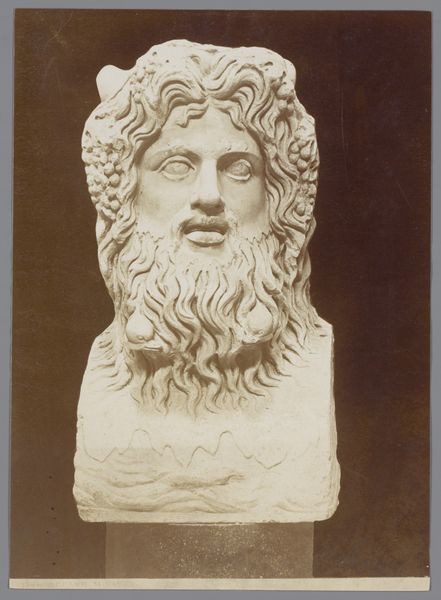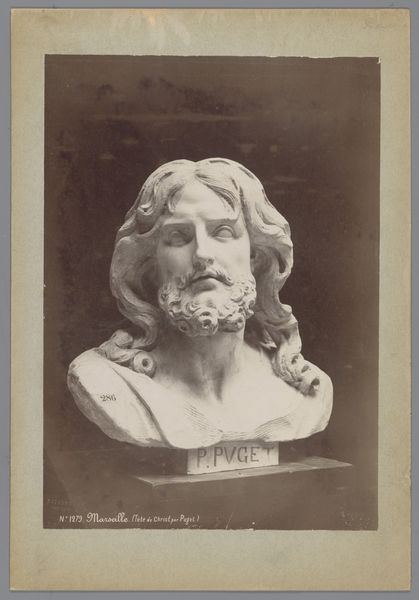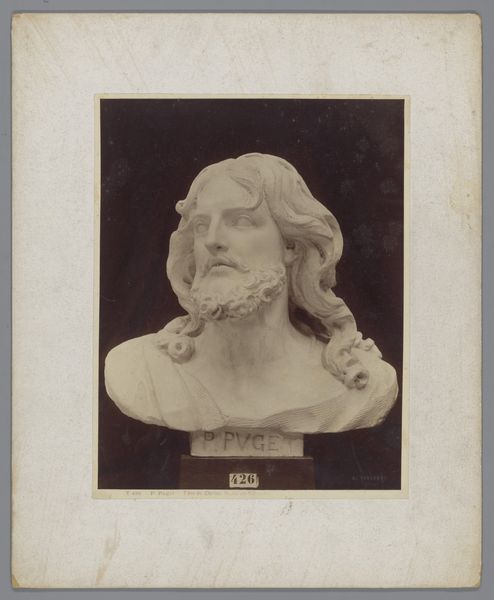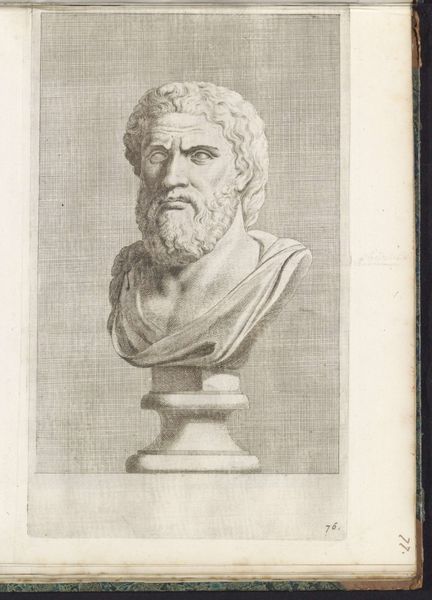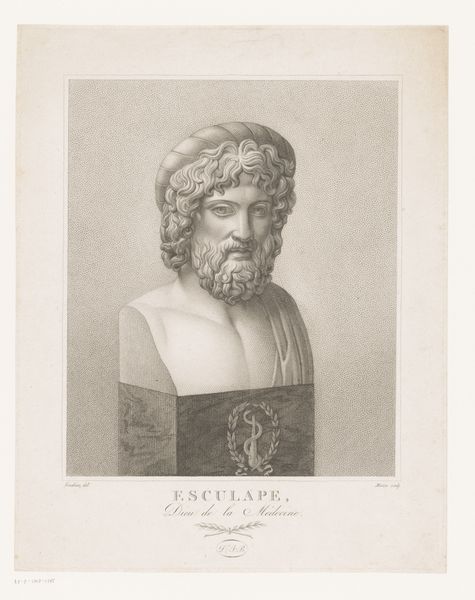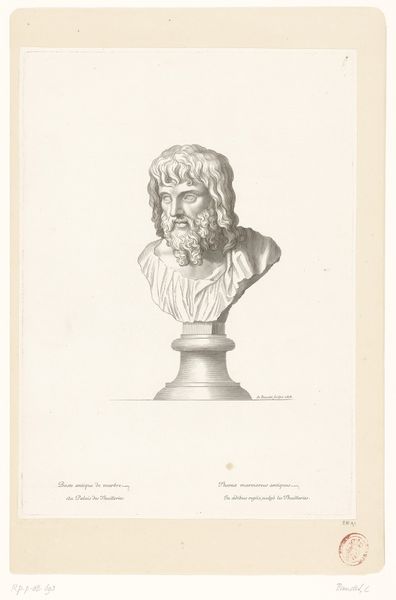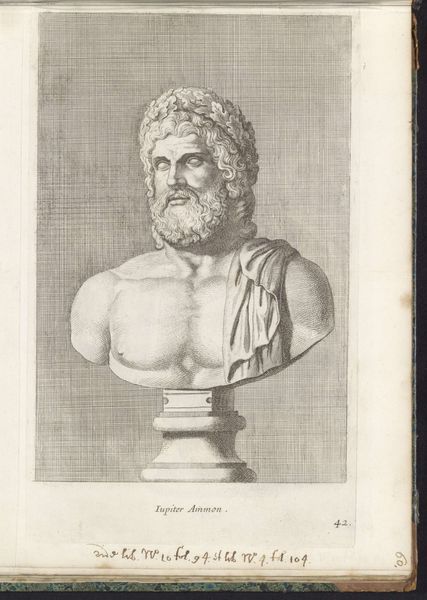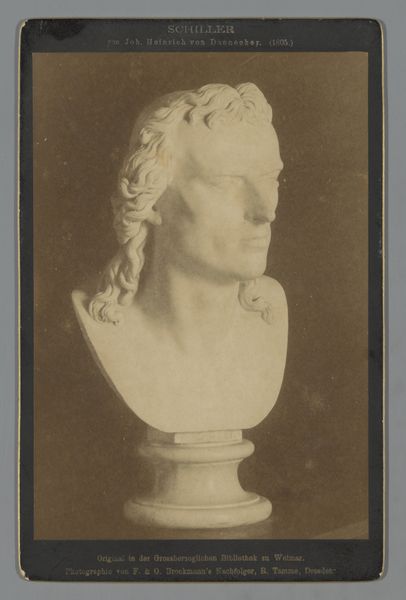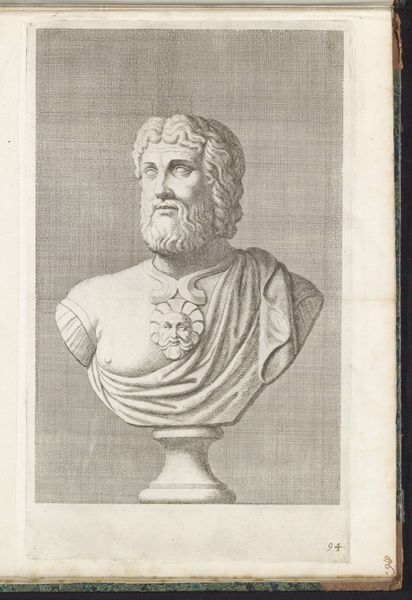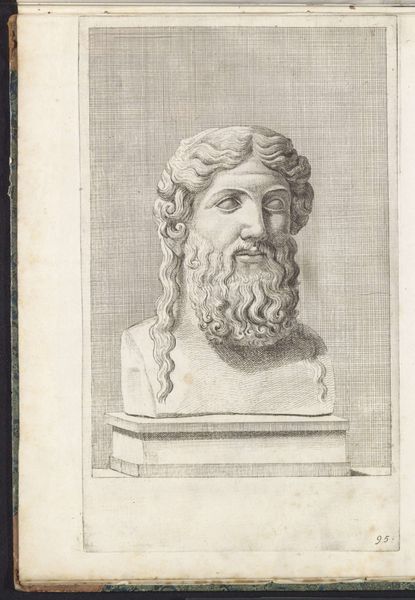
Dimensions: height 411 mm, width 288 mm
Copyright: Rijks Museum: Open Domain
This photograph of the Buste van Jupiter was taken by James Anderson in the 19th century. It’s not just an image, but an artifact tied to photography's evolving social role. Consider the wet collodion process Anderson likely used. A glass plate was coated, sensitized, exposed, and developed, all before it dried! This demanded skill, speed, and a portable darkroom, often a wagon. The resulting albumen print, made from paper coated with egg white, gave a sharp image. Photography in this era was about reproduction, capturing and disseminating images of classical sculpture to a wider audience. The intense labor contrasts with the aura of the artwork being captured. It makes you think about the democratization of art through photographic reproduction, and the hierarchies implicit in how images were made and circulated. The final photograph flattens the three-dimensional sculpture onto a 2D surface, influencing how we perceive and value cultural heritage.
Comments
No comments
Be the first to comment and join the conversation on the ultimate creative platform.
